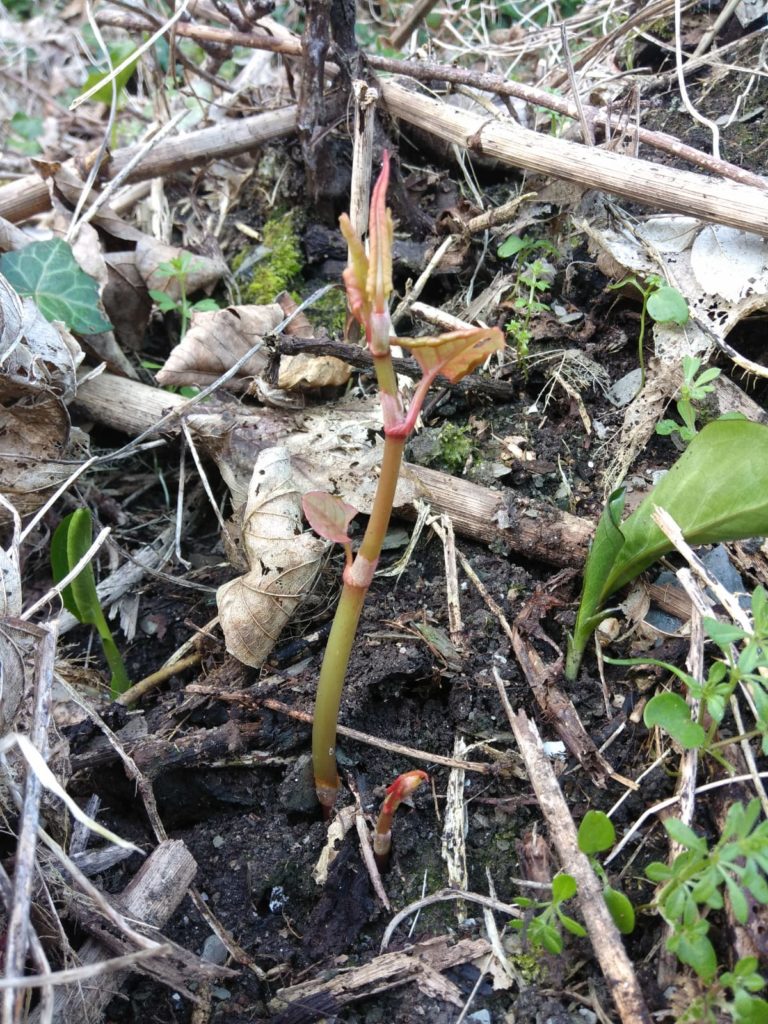Japanese knotweed shoots emerge a month earlier than normal due to record February temperatures
07 March 2019: The warmest February on record has prompted the emergence of Japanese knotweed at least one month earlier than usual, with spring shoots spotted by removal firm Environet UK last week in North Devon.

Picture shows: Japanese knotweed growing in February in North Devon. Credit: Environet UK
Japanese knotweed hibernates during the winter months before emerging when the ground temperature reaches around 4°c, usually in late March/early April. Red or purple asparagus-like shoots sprout from the ground and quickly turn into green bamboo-like stems, growing at a rapid rate to reach approximately 3 metres in height by June.
But the unseasonably warm weather, averaging 10°c and peaking at 20.6°c in West Wales at end of February, according to the Met Office, has prompted knotweed to awake early from its winter slumber and begin its annual assault on property foundations, patios, driveways, cavity walls and drains.
Knotweed has emerged a whole two months earlier than last year, when it was delayed due to the Beast from the East and didn’t appear until the end of April and into May.
Environmental scientist Nic Seal, Founder and MD of Environet, said:
“In twenty years of operation, I’ve never seen Japanese knotweed appear in February. The unseasonably warm weather has awakened the plant from its winter hibernation and prompted it to start growing an entire month earlier than normal. We’re gearing up for an early start to our treatment season to give our customers maximum protection from this highly invasive plant.”
While herbicide treatments require the plant to be in full leaf, it isn’t necessary to wait as it can be removed at any time of year using the environmentally friendly Resi-Dig-Out method, which involves digging out the rhizome roots and sifting out every viable piece before returning the clean soil to the ground. A 10-year insurance-backed guarantee is then provided for the treatment, which will ensure the property can be bought or sold without difficulty.
Those who spot the plant can report the sighting on Environet’s new Japanese knotweed heatmap, Exposed, the only live tracking tool monitoring knotweed sightings across the UK. Members of the public can enter a postcode to discover the number of reported knotweed sightings nearby, with hotspots clearly visible in yellow or red. Thousands of sightings have already been added and people are encouraged to help populate the heatmap further by reporting knotweed infestations using the ‘Add Sighting’ feature and attaching a photograph of the plant so it can be verified by experts.
Environet also offers a free Japanese knotweed identification service. Just email a photo to [email protected].
Kindly shared by Environet UK
















